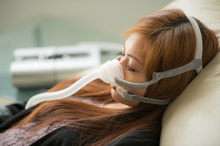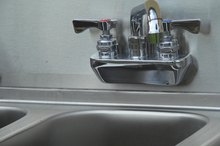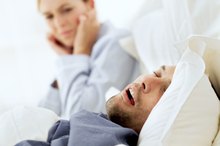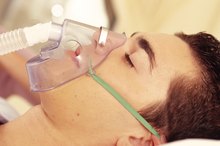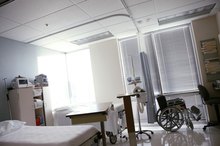What does fact checked mean?
At Healthfully, we strive to deliver objective content that is accurate and up-to-date. Our team periodically reviews articles in order to ensure content quality. The sources cited below consist of evidence from peer-reviewed journals, prominent medical organizations, academic associations, and government data.
The information contained on this site is for informational purposes only, and should not be used as a substitute for the advice of a professional health care provider. Please check with the appropriate physician regarding health questions and concerns. Although we strive to deliver accurate and up-to-date information, no guarantee to that effect is made.
The Best CPAP BiPAP Masks for High Pressure
People with sleep apnea experience intermittent pauses in their breathing, or apnea, throughout the night. Continuous positive airway pressure, or CPAP, machines eliminate apnea by sending air compressed into a pre-set pressure into the upper airways, keeping them from collapsing or narrowing. BiPAP, or bilevel positive airway pressure, machines also provide compressed air, but deliver it at a lower pressure during exhalation and a higher pressure during inhalation. BiPAP and CPAP machines have three components: an air compressor that creates the desired air pressures, a mask that connects to the face and a hose to convey air from the compressor through the interface. People who require high pressure settings need a well-fitting mask to benefit from CPAP or BiPAP.
Nasal Mask with Foam Cushion
Nasal masks are triangular interfaces designed to fit snugly around the nose to keep pressurized air from leaking out. People who need high pressure settings on their CPAP or BiPAP machines may do well with nasal masks lined with foam cushions to create an airtight seal that’s effective yet comfortable, according to MayoClinic.com 1. Side straps that attach to either side of the mask and wrap laterally around the head help to keep air pressure at the prescribed level.
Nasal Mask with Suction
How Does a BiPAP Machine Work?
Learn More
Nasal masks that suction to the face offer another alternative for individuals who need high pressure settings to keep their airways open, states MayoClinic.com. When used together with side straps, these masks stay in place throughout the night to provide a leak-free interface.
Nasal Pillows
Some individuals who require high air pressure through their CPAP or BiPAP machines choose nasal pillows, which are small mushroom-shaped components that fit into either nostril, rather than a mask per se 1. Nasal pillows should fit snugly within the nostrils so they don’t leak, but not so tight that they’re uncomfortable. However, the American Sleep Apnea Association notes, some people with high air pressures find nasal pillows uncomfortable.
Related Articles
References
- MedlinePlus: Nasal CPAP
- Mayo Clinic: Slide Show: Which CPAP Masks are Best for You?
- Javaheri S, Brown LK. Positive airway pressure therapy for hyperventilatory central sleep apnea: idiopathic, heart failure, cerebrovascular disease, and high altitude. Sleep Med Clin. 2017;12(4):565-572. doi:10.1016/j.jsmc.2017.07.006
- Kryger, MH et al. Principles and Practice of Sleep Medicine. Elsevier, 6th edition, 2017.
- Mansukhani MP, Kolla BP, Olson EJ, Ramar K, Morgenthaler TI. Bilevel positive airway pressure for obstructive sleep apnea. Expert Rev Med Devices. 2014 May;11(3):283-94. doi:10.1586/17434440.2014.900435
- Reeves-Hoché MK, Hudgel DW, Meck R, Witteman R, Ross A, Zwillich CW. Continuous versus bilevel positive airway pressure for obstructive sleep apnea. Am J Respir Crit Care Med. 1995;151(2 Pt 1):443-9. doi:10.1164/ajrccm.151.2.7842204
Writer Bio
Sandy Keefe, M.S.N., R.N., has been a freelance writer for over five years. Her articles have appeared in numerous health-related magazines, including "Advance for Nurses" and "Advance for Long-Term Care Management." She has written short stories in anthologies such as "A Cup of Comfort for Parents of Children with Special Needs."
